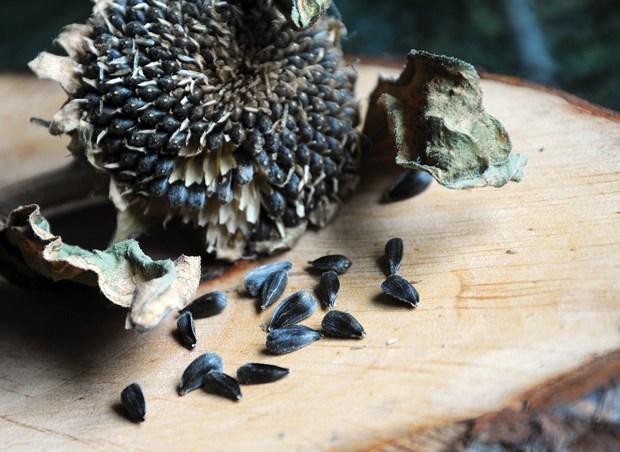The seeds of spring are found in the flowers of fall that wither in winter.
Seed collecting is a passion for some people, a business for others and a hobby for many gardeners. For some trees, shrubs and perennials fall is a good time to harvest and store seeds for next spring. Seed collection can be an economical way to obtain new plants and to store large quantities of seed from existing crops for sowing in future. The practice of seed saving goes back thousands of years into our agrarian past. Farmers have always collected the seeds of fall from their crops before harvest, enabling crop production in the next season. Seed saving also allows growers to avoid paying for new seed in spring. Another advantage of seed saving is the ability to choose seeds from crops with desirable traits while avoiding seed collection from under-performing crops. The preservation of genetic diversity through seed saving is a key foundation on which crop production has been built over the centuries.
There are a few key procedures to use when collecting and storing seeds. Firstly, don't collect seed just because there is seed available. Collecting seeds from inferior plants only perpetuates weak strains. For example, seeds that have been genetically modified through gene splicing in a laboratory are inferior to naturally hybridized seeds. Choose seeds from the plants that performed the best during the growing season. Look for plants with robust growth and the best flowering habit. Not to be overlooked are those plants that demonstrated a resistance to disease or drought stress. By choosing seeds from plants with improved or desirable characteristics, a grower can gradually enhance the quality of plants thereby growing improved varieties.
Not to be overlooked is the valuable characteristic of genetic mutation that occurs regularly in nature. Genetic mutation can be caused by several environmental factors, open-pollination or intentionally developed by crossing differing plants together to produce new varieties. Many new varieties are developed by sowing hundreds of seeds in batches and as the seedlings develop the grower can search for new leaf colours and shapes, improved flower colour, a more robust growth habit and so forth.
A few words on seed collecting etiquette: The removal of any plant from crown land is prohibited by law; however, collecting seeds from parks and other wild places is generally not illegal as long as you do not damage plants or property in the process. Always obtain permission from any private property owner before you enter their land to collect seeds. And collecting seed from other countries while travelling and bringing those seeds back home is prohibited by law. Border customs agents will seize your seeds and you may receive a fine or be prosecuted.
Secondly, collect the seed then clean and dry it as soon as possible. Failure to clean seeds quickly can result in the degradation of the seed's ability to germinate, or the seed may rot before it can be stored. Cleaning seeds involves careful removal of the outer seed husk and any other plant parts not relevant to germination. Never remove the seed coat, or skin that protects the seeds.
It is important before cleaning seeds to wash your hands to remove any bacteria or microbes on your hands that may infect and decay the seed during storage. After the seed has been cleaned, it should be dried before storage. Seed that is stored wet or moist will decay and rot while in storage. For a simple drying technique, place cleaned seeds on paper towel and allow them to air dry a few hours before storing them. A hair dryer can also be used to dry seeds but it must be done using a cool air setting only, not the warm air setting which will cook the seeds. It is also important to accurately label the genus and species, or common name if you prefer, and indicate the date and location the seed was collected.
Thirdly, store your seeds for future sowing. The simplest vessel to store seeds in at home is a small plain envelope because they are cost effective, easy to store in bulk and they breathe. The best place to store seeds to preserve their viability is in the fridge. Refrigeration at a temperature just above freezing will preserve the seed's ability to germinate for many years. Do not store seeds in a freezer because the seed could be damaged by sub-zero temperatures, or it may begin to germinate. Do not store seeds in a cupboard, out in the garage or in a storage shed. Those locations are susceptible to moisture intrusion or excessive drying, which will degrade the seed's viability.
Remember, choose seeds from plants with desirable traits, clean and store seeds properly and enjoy the fall harvest.
Todd Major is a journeyman horticulturist, garden designer and builder, teacher and organic advocate. [email protected]



